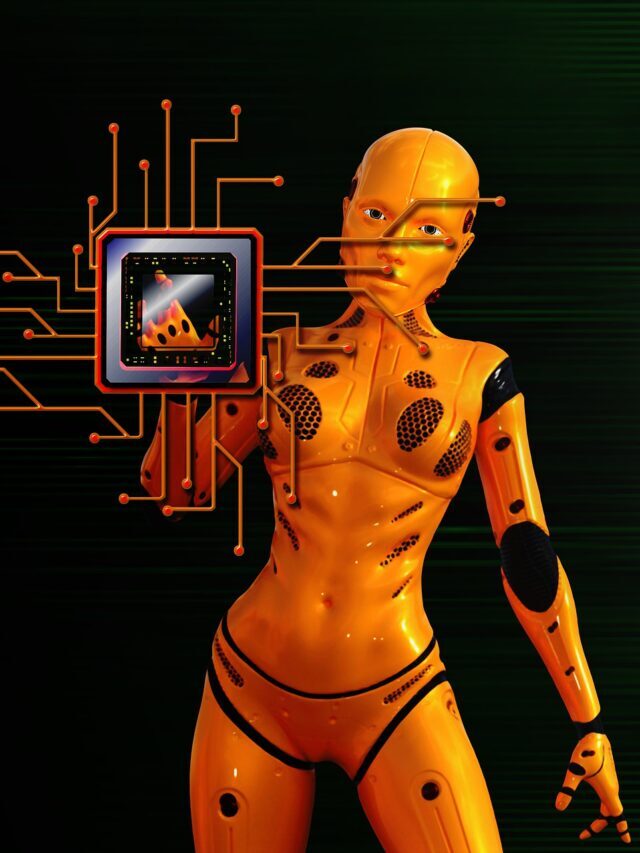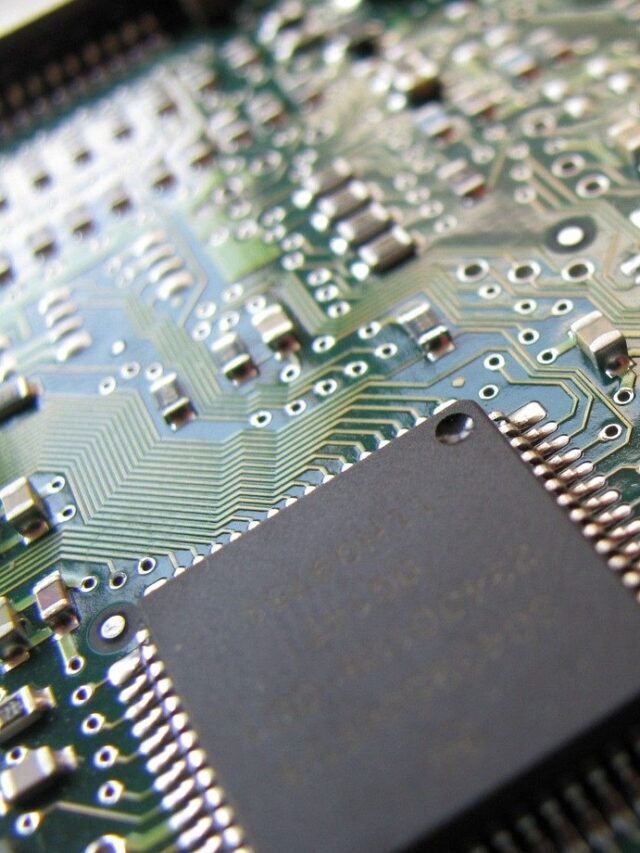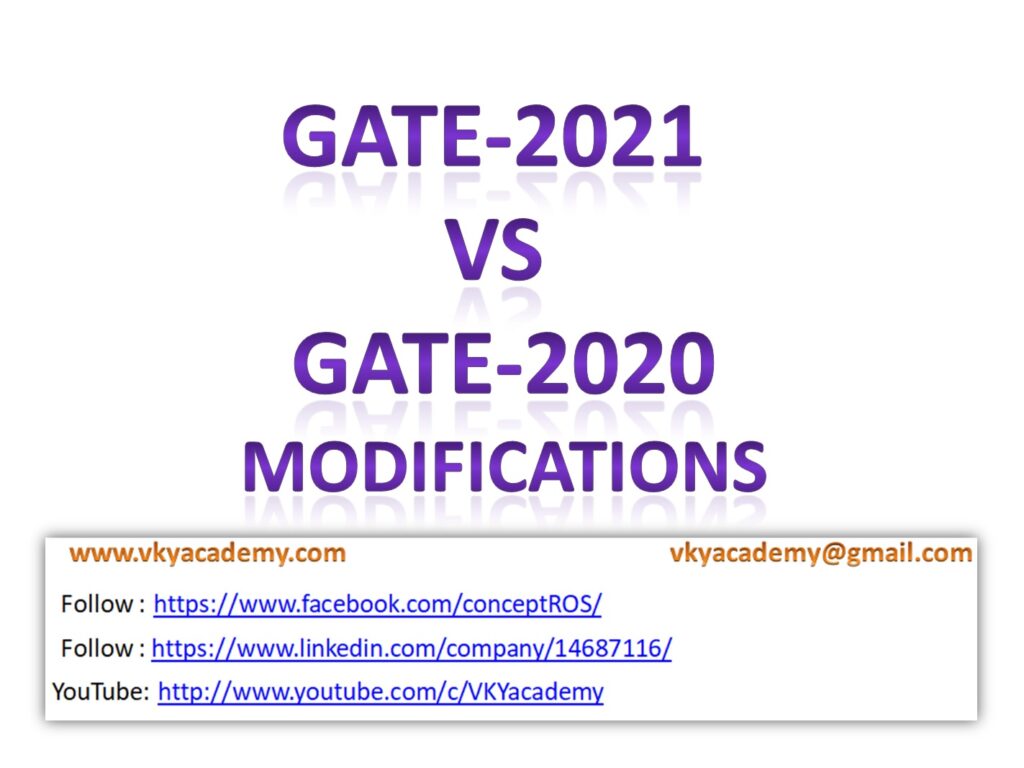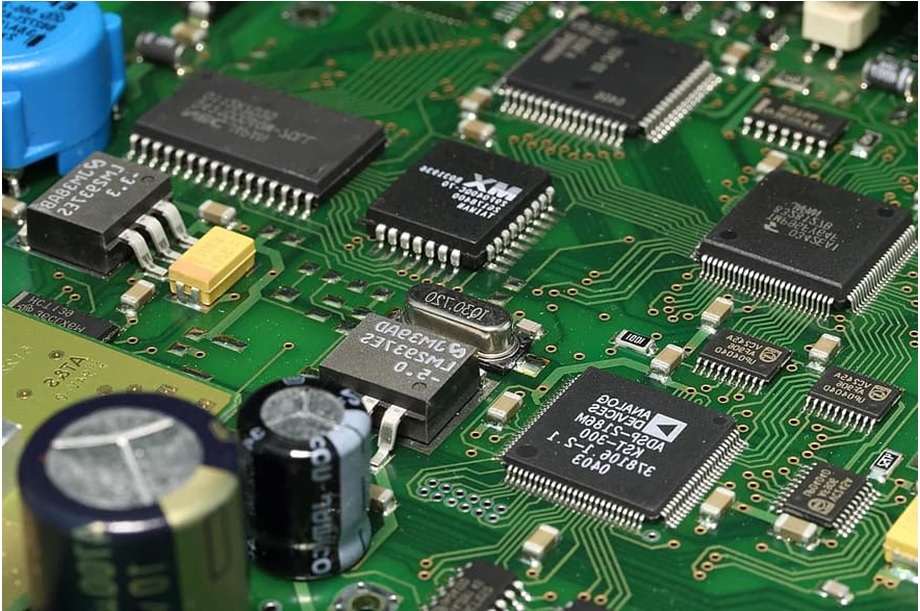| GATE-2020 Syllabus | GATE-2021 Syllabus | Changes in 2021 EC Syllabus |
| Section 1: Engineering Mathematics | ||
| Linear Algebra: Vector space, basis, linear dependence and independence, matrix algebra, eigen values and eigen vectors, rank, solution of linear equations – existence and uniqueness. Calculus: Mean value theorems, theorems of integral calculus, evaluation of definite and improper integrals, partial derivatives, maxima and minima, multiple integrals, line, surface and volume integrals, Taylor series. Differential Equations: First order equations (linear and nonlinear), higher-order linear differential equations, Cauchy’s and Euler’s equations, methods of solution using variation of parameters, complementary function, and particular integral, partial differential equations, variable separable method, initial and boundary value problems. Vector Analysis: Vectors in plane and space, vector operations, gradient, divergence and curl, Gauss’s, Green’s, and Stoke’s theorems. Complex Analysis: Analytic functions, Cauchy’s integral theorem, Cauchy’s integral formula; Taylor’s and Laurent’s series, residue theorem. Numerical Methods: Solution of nonlinear equations, single and multi-step methods for differential equations, convergence criteria. Probability and Statistics: Mean, median, mode and standard deviation; combinatorial probability, probability distribution functions – binomial, Poisson, exponential and normal; Joint and conditional probability; Correlation and regression analysis. | Linear Algebra: Vector space, basis, linear dependence, and independence, matrix algebra, eigenvalues and eigenvectors, rank, solution of linear equations- existence and uniqueness. Calculus: Mean value theorems, theorems of integral calculus, evaluation of definite and improper integrals, partial derivatives, maxima and minima, multiple integrals, line, surface and volume integrals, Taylor series. Differential Equations: First order equations (linear and nonlinear), higher-order linear differential equations, Cauchy’s and Euler’s equations, methods of solution using variation of parameters, complementary function, and particular integral, partial differential equations, variable separable method, initial and boundary value problems. Vector Analysis: Vectors in plane and space, vector operations, gradient, divergence and curl, Gauss’s, Green’s, and Stokes’ theorems. Complex Analysis: Analytic functions, Cauchy’s integral theorem, Cauchy’s integral formula, sequences, series, convergence tests, Taylor and Laurent series, residue theorem. Probability and Statistics: Mean, median, mode, standard deviation, combinatorial probability, probability distributions, binomial distribution, Poisson distribution, exponential distribution, normal distribution, joint and conditional probability. | Excluded: Numerical Methods: Solution of nonlinear equations, single and multi-step methods for differential equations, convergence criteria. Included: sequences, series, convergence tests, |
| Section 2: Networks, Signals, and Systems | ||
| Network solution methods: nodal and mesh analysis; Network theorems: superposition, Thevenin and Norton’s, maximum power transfer; Wye‐Delta transformation; Steady state sinusoidal analysis using phasors; Time-domain analysis of simple linear circuits; Solution of network equations using Laplace transform; Frequency domain analysis of RLC circuits; Linear 2‐port network parameters: driving point and transfer functions; State equations for networks. Continuous-time signals: Fourier series and Fourier transform representations, sampling theorem, and applications; Discrete-time signals: discrete-time Fourier transform (DTFT), DFT, FFT, Z-transform, interpolation of discrete-time signals; LTI systems: definition and properties, causality, stability, impulse response, convolution, poles and zeros, parallel and cascade structure, frequency response, group delay, phase delay, digital filter design techniques. | Circuit analysis: Node and mesh analysis, superposition, Thevenin’s theorem, Norton’s theorem, reciprocity. Sinusoidal steady-state analysis: phasors, complex power, maximum power transfer. Time and frequency domain analysis of linear circuits: RL, RC and RLC circuits, Solution of network equations using Laplace transform. Linear 2-port network parameters, wye-delta transformation. Continuous-time signals: Fourier series and Fourier transform, sampling theorem, and applications. Discrete-time signals: DTFT, DFT, z-transform, discrete-time processing of continuous-time signals. LTI systems: definition and properties, causality, stability, impulse response, convolution, poles and zeroes, frequency response, group delay, phase delay. representation; Signal flow graph; Transient and steady-state analysis of LTI systems; Frequency response; Routh-Hurwitz and Nyquist stability criteria; Bode and root-locus plots; Lag, lead and lag-lead compensation; State variable model and solution of state equation of LTI systems. | Excluded: FFT (Fast Fourier Transform) Included: representation; Signal flow graph; Transient and steady-state analysis of LTI systems; Frequency response; Routh-Hurwitz and Nyquist stability criteria; Bode and root-locus plots; Lag, lead and lag-lead compensation; State variable model and solution of state equation of LTI systems. [NOTE: The topic above was the portion of control system in GATE-2020 (EC) Syllabus] |
| Section 3: Electronic Devices | ||
| Energy bands in intrinsic and extrinsic silicon; Carrier transport: diffusion current, drift current, mobility and resistivity; Generation and recombination of carriers; Poisson and continuity equations; P-N junction, Zener diode, BJT, MOS capacitor, MOSFET, LED, photodiode and solar cell; Integrated circuit fabrication process: oxidation, diffusion, ion implantation, photolithography, and twin-tub CMOS process. | Energy bands in intrinsic and extrinsic semiconductors, equilibrium carrier concentration, direct and indirect band-gap semiconductors. Carrier transport: diffusion current, drift current, mobility and resistivity, generation and recombination of carriers, Poisson, and continuity equations. P-N junction, Zener diode, BJT, MOS capacitor, MOSFET, LED, photodiode, and solar cell. | Excluded: Integrated circuit fabrication process: oxidation, diffusion, ion implantation, photolithography and twin-tub CMOS process. Included: No new topic has been included. |
| Section 4: Analog Circuits | ||
| Small signal equivalent circuits of diodes, BJTs, and MOSFETs; Simple diode circuits: clipping, clamping, and rectifiers; Single-stage BJT and MOSFET amplifiers: biasing, bias stability, mid-frequency small-signal analysis, and frequency response; BJT and MOSFET amplifiers: multi-stage, differential, feedback, power and operational; Simple op-amp circuits; Active filters; Sinusoidal oscillators: criterion for oscillation, single-transistor, and op-amp configurations; Function generators, wave-shaping circuits, and 555 timers; Voltage reference circuits; Power supplies: ripple removal and regulation. | Diode circuits: clipping, clamping, and rectifiers. BJT and MOSFET amplifiers: biasing, ac coupling, small-signal analysis, frequency response. Current mirrors and differential amplifiers. Op-amp circuits: Amplifiers, summers, differentiators, integrators, active filters, Schmitt triggers, and oscillators. | Excluded: Function generators, wave-shaping circuits and 555 timers; Voltage reference circuits; Power supplies: ripple removal and regulation. Included: No new topic has been included. |
| Section 5: Digital Circuits | ||
| Number systems; Combinatorial circuits: Boolean algebra, minimization of functions using Boolean identities and Karnaugh map, logic gates and their static CMOS implementations, arithmetic circuits, code converters, multiplexers, decoders, and PLAs; Sequential circuits: latches and flip‐flops, counters, shift‐registers, and finite state machines; Data converters: sample and hold circuits, ADCs and DACs; Semiconductor memories: ROM, SRAM, DRAM; 8-bit microprocessor (8085): architecture, programming, memory, and I/O interfacing. | Number representations: binary, integer, and floating-point- numbers. Combinatorial circuits: Boolean algebra, minimization of functions using Boolean identities and Karnaugh map, logic gates, and their static CMOS implementations, arithmetic circuits, code converters, multiplexers, decoders. Sequential circuits: latches and flip-flops, counters, shift-registers, finite state machines, propagation delay, setup and hold time, critical path delay. Data converters: sample and hold circuits, ADCs, and DACs. Semiconductor memories: ROM, SRAM, DRAM. Computer organization: Machine instructions and addressing modes, ALU, data-path, and control unit, instruction pipelining. | Excluded: 8-bit microprocessor (8085): architecture, programming, memory and I/O interfacing. Included: Computer organization: Machine instructions and addressing modes, ALU, data-path and control unit, instruction pipelining. |
| Section 6: Control Systems | ||
| Basic control system components; Feedback principle; Transfer function; Block diagram representation; Signal flow graph; Transient and steady-state analysis of LTI systems; Frequency response; Routh-Hurwitz and Nyquist stability criteria; Bode and root-locus plots; Lag, lead and lag-lead compensation; State variable model and solution of state equation of LTI systems. | Basic control system components; Feedback principle; Transfer function; Block diagram | Excluded: Signal flow graph; Transient and steady-state analysis of LTI systems; Frequency response; Routh-Hurwitz and Nyquist stability criteria; Bode and root-locus plots; Lag, lead and lag-lead compensation; State variable model and solution of state equation of LTI systems. Included: No new topic has been included. |
| Section 7: Communications | ||
| Random processes: autocorrelation and power spectral density, properties of white noise, filtering of random signals through LTI systems; Analog communications: amplitude modulation and demodulation, angle modulation and demodulation, spectra of AM and FM, superheterodyne receivers, circuits for analog communications; Information theory: entropy, mutual information and channel capacity theorem; Digital communications: PCM, DPCM, digital modulation schemes, amplitude, phase, and frequency-shift keying (ASK, PSK, FSK), QAM, MAP, and ML decoding, matched filter receiver, calculation of bandwidth, SNR and BER for digital modulation; Fundamentals of error correction, Hamming codes; Timing and frequency synchronization, inter-symbol interference and its mitigation; Basics of TDMA, FDMA, and CDMA. | Random processes: autocorrelation and power spectral density, properties of white noise, filtering of random signals through LTI systems. Analog communications: amplitude modulation and demodulation, angle modulation and demodulation, spectra of AM and FM, superheterodyne receivers. Information theory: entropy, mutual information, and channel capacity theorem. Digital communications: PCM, DPCM, digital modulation schemes (ASK, PSK, FSK, QAM), bandwidth, inter-symbol interference, MAP, ML detection, matched filter receiver, SNR, and BER. Fundamentals of error correction, Hamming codes, CRC. | Excluded: Basics of TDMA, FDMA and CDMA. |
| Section 8: Electromagnetics | ||
| Electrostatics; Maxwell’s equations: differential and integral forms and their interpretation, boundary conditions, wave equation, Poynting vector; Plane waves and properties: reflection and refraction, polarization, phase, and group velocity, propagation through various media, skin depth; Transmission lines: equations, characteristic impedance, impedance matching, impedance transformation, S-parameters, Smith chart; Waveguides: modes, boundary conditions, cut-off frequencies, dispersion relations; Antennas: antenna types, radiation pattern, gain, and directivity, return loss, antenna arrays; Basics of radar; Light propagation in optical fibers. | Maxwell’s equations: differential and integral forms and their interpretation, boundary conditions, wave equation, Poynting vector. Plane waves and properties: reflection and refraction, polarization, phase and group velocity, propagation through various media, skin depth. Transmission lines: equations, characteristic impedance, impedance matching, impedance transformation, S-parameters, Smith chart. Rectangular and circular waveguides, light propagation in optical fibers, dipole and monopole antennas, linear antenna arrays. | No Changes |
GATE-2021 Video Lectures:
For the GATE-EC video lecture refer to the following link. Very soon the youtube channel will be updated according to the new syllabus of EC (Electronics and Communication). For any further notification in the channel subscribe to the following channel and hit the bell icon.
Section 2: Networks, Signals, and Systems Chapter: Z Transform
Section 2: Networks, Signals, and Systems Chapter: Discrete Fourier Transform (DFT)
Section 5: Digital Circuits
Section 4: Analog Circuits










